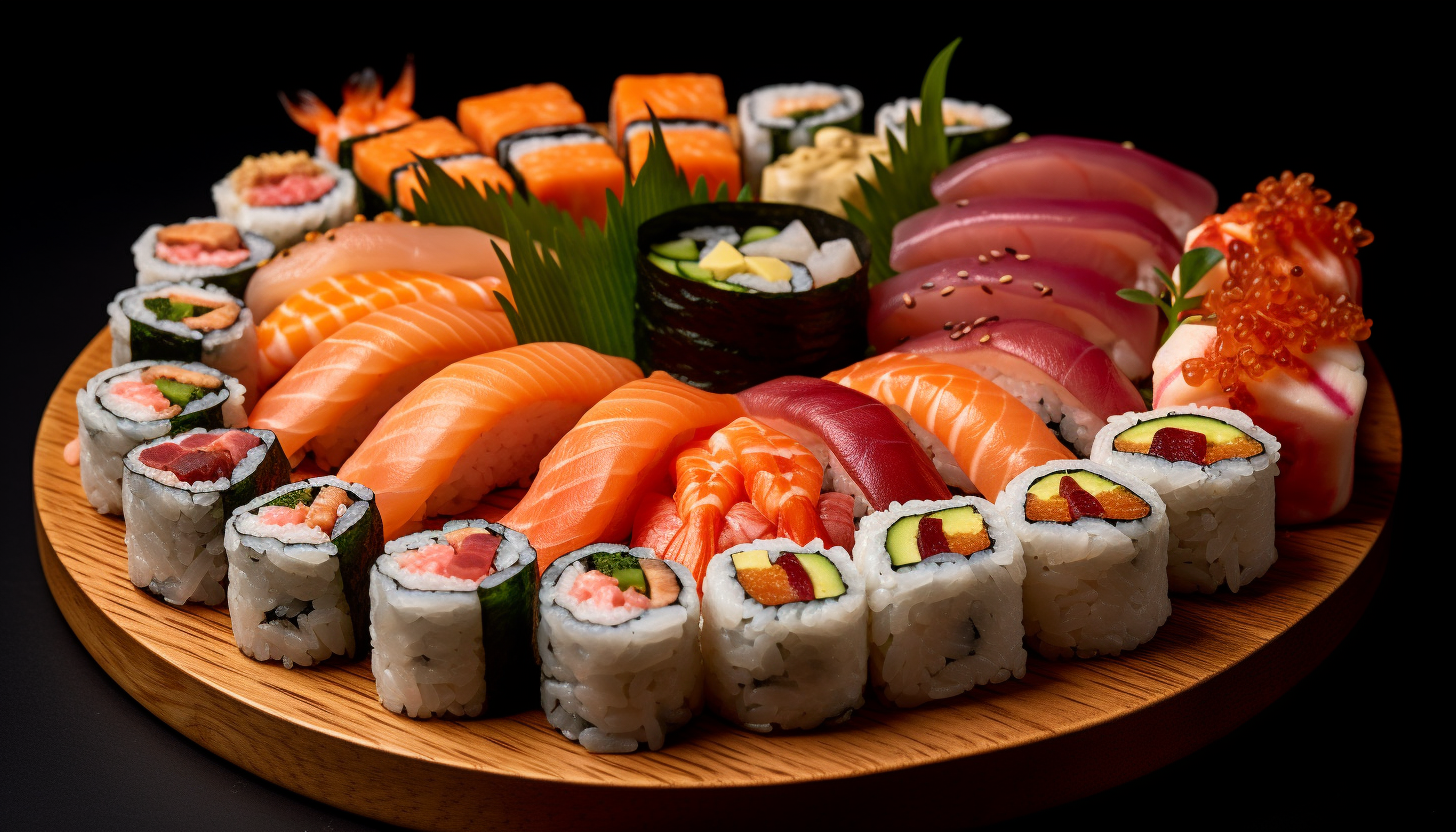P
May 25, 2023
The Art of Sushi: Understanding the Traditions and Delicacies
#Art of Sushi
#Sushi Traditions
#Sushi Delicacies
#Japanese Food
#Seafood
#Maki Rolls
#Fusion Cuisine
#Ingredients
#Techniques
#Restaurant Etiquette
#Home Cooking

art-sushi-thumbnail
Understanding the Art of Sushi
Sushi, a Japanese delicacy, is renowned for its balance of flavors, textures, and aesthetics. Sushi, a uniquely Japanese creation, is a culinary art form that has evolved over centuries. The art of sushi is deeply rooted in the traditions of Japan and is steeped in tradition and culture. Understanding the traditions and delicacies of sushi will help you appreciate the art of this culinary masterpiece more deeply. In this blog post, we will explore the origins of sushi, the various types of sushi, the different types of maki rolls, the techniques involved in making sushi, and the restaurant etiquette to be followed while dining at a sushi restaurant.
The word sushi derives from the Japanese word 'sushi' meaning 'to cut'. It is a dish made from rice combined with various types of seafood and/or vegetables. Traditionally, the rice is seasoned with seaweed, vinegar, and other condiments. The key to a good sushi is the balance of flavors, textures, and aesthetics. The rice, combined with the freshness and quality of the ingredients, forms the core of the dish. The ingredients are carefully selected and arranged on top of the rice to form aesthetically pleasing maki rolls. The art of sushi lies in perfecting the balance of flavors, textures, and aesthetics in each maki roll.
Traditions of Sushi
Traditions surrounding the making of sushi have evolved over centuries. The history of sushi can be traced back to ancient Japan. The ancient Japanese believed that the soul of a person was embodied in the food they ate, and they carefully selected their foods to ensure that they were healthy and nutritious. The art of sushi was deeply rooted in religion and culture. It was considered a sacred duty to serve the gods with the best ingredients and the most beautiful presentation. This tradition of serving the gods with the best ingredients and presentation has survived even today, and it forms the foundation of many sushi restaurants.
Sushi traditions vary from region to region. In the Kansai region of Japan, the most popular maki roll is the mousaka maki, which is made with crab meat, egg, and panko bread crumbs. In the Ise region, the maki roll is made with a type of seaweed called 'nori', which is considered a delicacy. In Nagoya, the most popular maki roll is the omusubi maki, which is made with slices of nori, rice, and pickled vegetables. The different types of maki rolls reflect the diverse culinary traditions of Japan.
Sushi techniques involve a variety of techniques, each of which plays an important role in the perfecting of the art of sushi. The first technique involves the handling and preparation of the raw ingredients. The quality and freshness of the ingredients is of utmost importance. The rice is carefully prepared with the right combination of vinegar, sugar, and salt to balance the flavors of the ingredients. The ingredients are then carefully arranged on top of the rice, followed by the perfect layer of nori and then the final layer of topping. The technique of 'araki' involves pressing the ingredients firmly against the rice to ensure that they are well-incorporated into the rice.
Restaurant Etiquette
When dining at a sushi restaurant, the most critical aspect to be observed is the etiquette. First, the order should be placed in Japanese, with the name of the dish clearly stated in the order. The server will then explain the ingredients and the preparation method of the dish. Once the order is confirmed, it is considered rude to start eating before the food is served. It is also customary to start with a small serving of miso soup before the main course. The main course should be eaten slowly, and the server should be given time to clean the table before the next course is served.
Home cooking is often based on the recipes passed down from generations. However, it is important to understand that the art of sushi is a complex one, and it requires deep understanding of the ingredients and techniques used. This understanding can only be gained through years of practice, learning from experienced chefs and culinary masters. Remember, the art of sushi is not just about the ingredients, but also about the techniques and the delicacies that these ingredients bring together.


